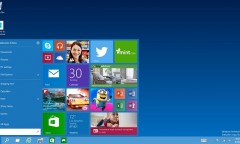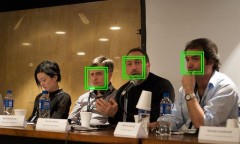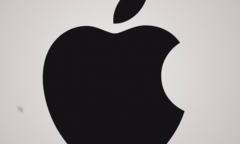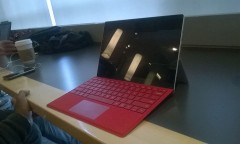By Vishal Goel, | January 18, 2017

Microsoft has tried patenting thousands of inventions in the past that never made it into final products. (YouTube)
Tech giant Microsoft has applied for a patent which shows tablets that can be folded to form a smartphone.
The detailed diagrams in the patent filings show a device with flexible hinges and a display that can be laid flat in the form of a tablet, folded once to form a smartphone or even be used in "tent mode" like Lenovo's Yoga tablets. Other technology companies including Samsung and LG have also applied for similar patents.
Like Us on Facebook
According to MSPoweruser, the patent filings reveal that the tech company is, at least, experimenting with this type of concept for a future mobile device. The design appears to display two modes with two or three screens that extend flat out to make the device bigger and more of a tablet like Microsoft's original Courier concept. Microsoft reportedly first filed this phone patent in October 2014.
Microsoft has tried patenting thousands of inventions in the past that never made it into final products. However, this time the company is hopeful with the inventor of this concept, listed as Kabir Siddiqui, who has also successfully patented Microsoft's Surface Kickstand and Surface camera angle. Additionally, Microsoft is rumored to be looking forward to bring a Surface Phone to the market this year, but the software maker has consistently avoided traditional form factors for its Surface devices.
With the latest patent, Microsoft is looking at a potential return to phones, allowing users to transform their device into something greater than just a smartphone. The company describes the device as flexible supported by a flexible hinge structure which secures the plurality of housings to each other, permits the plurality of housings to rotate about an axis in relation to each other, and supports a continuous viewing area of the display that extends across the plurality of housings and the flexible hinge structure.
-
Use of Coronavirus Pandemic Drones Raises Privacy Concerns: Drones Spread Fear, Local Officials Say

-
Coronavirus Hampers The Delivery Of Lockheed Martin F-35 Stealth Fighters For 2020

-
Instagram Speeds Up Plans to Add Account Memorialization Feature Due to COVID-19 Deaths

-
NASA: Perseverance Plans to Bring 'Mars Rock' to Earth in 2031

-
600 Dead And 3,000 In The Hospital as Iranians Believed Drinking High-Concentrations of Alcohol Can Cure The Coronavirus

-
600 Dead And 3,000 In The Hospital as Iranians Believed Drinking High-Concentrations of Alcohol Can Cure The Coronavirus

-
COVID-19: Doctors, Nurses Use Virtual Reality to Learn New Skills in Treating Coronavirus Patients











